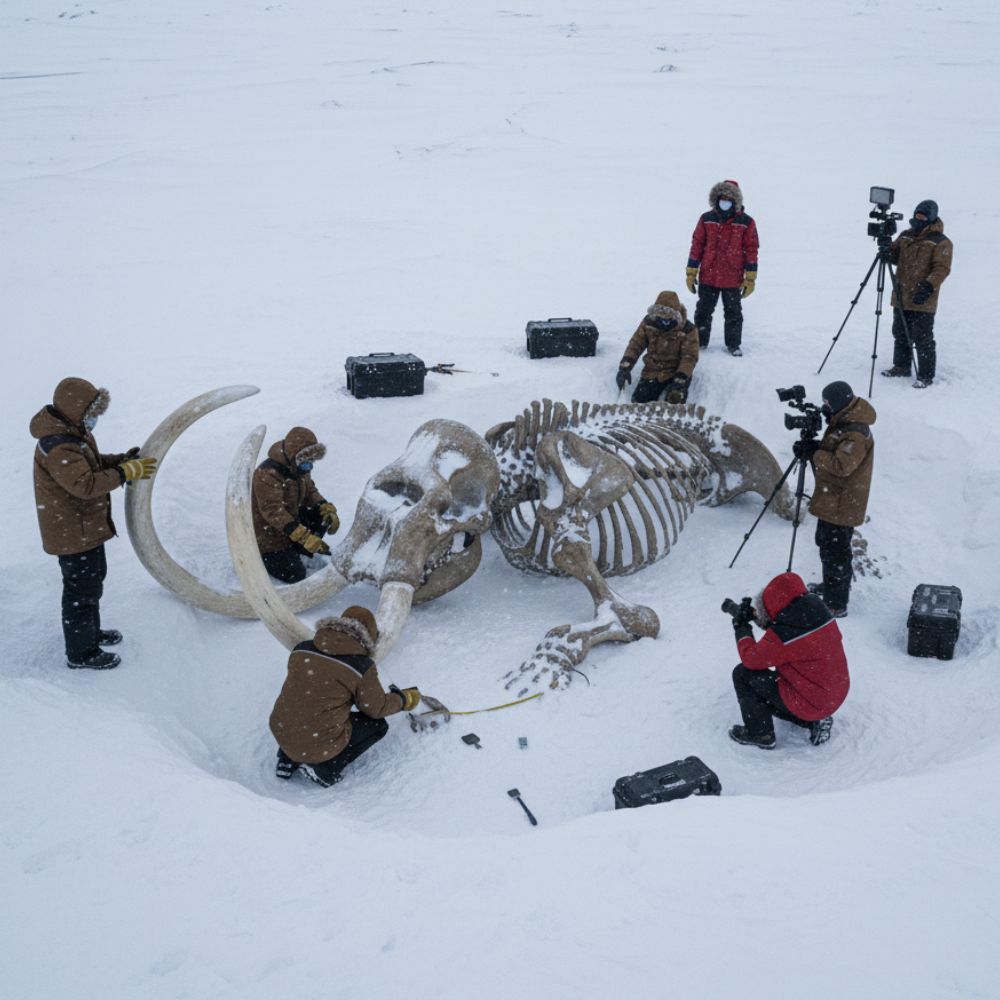Unearthing Giants: The Siberian Mammoth Discovery

The Arctic wind bit with a familiar ferocity, whipping fine snow across the desolate expanse of the Yamal Peninsula. Dr. Anya Petrova, her breath pluming in the frigid air, crouched low, her gloved hands delicately brushing away layers of ice from what appeared to be the curve of an enormous rib. It was the summer of 2012, but even in July, this far north in Siberia, the elements were relentless.
For weeks, Anya and her international team had been working against the clock, battling permafrost and blizzards. A local reindeer herder had reported an unusual protrusion from a melting riverbank, a discovery that sent ripples of excitement through the global paleontology community. What they found was beyond their wildest dreams: an almost perfectly preserved skeleton of a woolly mammoth, lying as it had fallen some 40,000 years ago, during the late Pleistocene epoch.
This wasn’t just any mammoth. This was a giant, its colossal tusks arcing majestically from the skull, hinting at a life of grazing on ancient grasslands now buried under tundra. The sheer scale of the excavation was immense. Each bone had to be meticulously cataloged, photographed, and carefully extracted before the brief Arctic summer surrendered to the long, dark winter. Anya remembered the painstaking effort to stabilize the fragile ivory of the tusks, working under portable lights long into the twilight hours, surrounded by the haunting silence of the frozen wilderness.
The discovery garnered international headlines, drawing parallels to the famous “Lyuba” baby mammoth found five years earlier. But this adult specimen offered an unprecedented window into the life of these magnificent creatures – their diet, their migrations, and perhaps even the cause of their demise. The team, a diverse mix of Russian, American, and European scientists, became a tight-knit family forged in the crucible of shared scientific passion and extreme conditions.
Today, fragments of that mammoth, affectionately nicknamed “Yama” by the team, reside in museums and research institutions, telling a story of ancient ecosystems and climatic shifts. But for Anya, the enduring memory is not just of the bones, but of the stark beauty of the Yamal wilderness, the camaraderie of her colleagues, and the profound privilege of touching a piece of history that had slumbered beneath the ice for millennia. It was a stark reminder of the giants that once roamed our planet, waiting patiently beneath the frozen earth to reveal their secrets.
